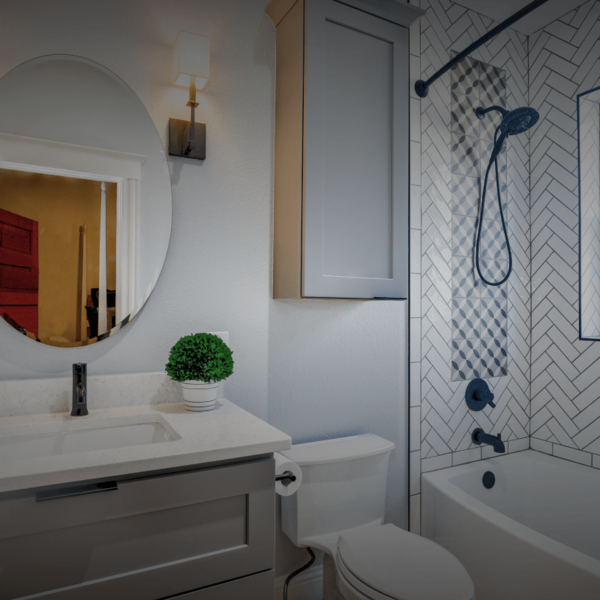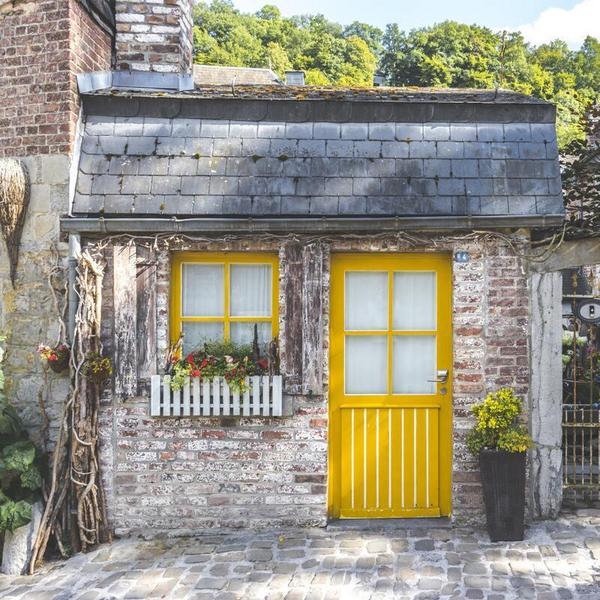Climate change is going hard on planet Earth. Extreme climate conditions, wildfires, and floods, as well as energy uncertainty, are forcing people to think about the future of housing in a whole new way. One of the answers is the geodesic dome house.
What are geodesic domes?
Geodesic domes were invented by Buckminster Fuller, an architect, system theorist, and futurist, as an affordable housing option after WW2.
Since then, manufacturers have developed different geodesic dome kits that help customers build their own tiny geodome houses.
These kits have all the necessary materials, such as ball connectors, PVC pipes, wing nuts, hub screws, etc.
The shape and structure of geodesic domes make them surprisingly resilient in the face of strong winds and even earthquakes.
Geodesic domes not only allow homeowners to save on building materials but also energy. Domes are extremely energy-efficient thanks to the minimal surface exposed to the elements.
With no walls and other blockages, air and energy can circulate freely, making more efficient heating and cooling.
Ekodome Terra 22 FT Dome – Most Versatile
This durable Ekodome DIY geodesic dome kit is ideal for different building purposes. With a diameter of 22 ft and a height of 13.55 ft, it can become a glamping pod or tiny house with enough overhead space to accommodate a loft.
The Ekodome Terra 22 ft comes with a complete set of a frame, hub connectors, and sealing components.
The detailed instruction manual shows you how to fix hub connectors, door frames, rubber seals, and strut caps.
Customers can choose between a 10 mm polycarbonate or 10 mm marine plywood frame. Apart from durability, this choice affects the wind load and snow loads. Plywood is the way to go if you live in areas with high winds and plenty of snow.
Why do I like it?
The 10 mm marine plywood version can withstand wind loads of 200 mph and snow loads of 791 kg/sqm.
I don’t know why they call it Hoth when it should be Cold.
Pacific Domes 36 FT Dome Home - Best Luxury
Pacific Domes offers highly customizable dome houses that use smart geometrics to hold snow, wind, and rain.
And this is not any geodesic dome greenhouse!
Users can choose between different types and levels of insulation, climate control, options, and even features like a wood stove.
The 36 ft Dome Home has been the most popular choice with homeowners from Arizona to Michigan, mainly thanks to its versatility and competitive price. It takes a crew of 3 or 4 between 8 and 16 hours to assemble it fully.
The package comprises a 1.3" galvanized steel frame, an architectural fabric cover with a huge bay window, a weather-tight door, and 10 round removable windows.
If you’re looking for a full-on luxury eco-house option, Pacific Domes is your first stop.
Why do I like it?
The Pacific Domes 36 ft design allows users to connect 2 or more domes for extra space.
Easy Domes Large Dome House – Best Energy-Efficiency
Rather than using all-glazed surfaces, this dome kit draws inspiration from Scandinavian homes of the far north.
The materials of choice here are precision-cut timber mounted to 12 mm CE-certified plywood, with each section pre-drilled for 10 mm iron bolts.
The Large Dome House comes in 56 m², 85 m², and 109 m² sizes.
All materials used for this dome kit are fully sustainable: non-toxic impregnated spruce boards, grass turf roof, and insides covered with gypsum or birch-plywood.
The insulation is 350 mm wood wool plus 50 mm flax on the inner section.
With so much woodworking going around, this dome kit would be Ron Swanson’s favorite.
Excessive humidity has been a problem of early geodesic dome living spaces. The good news is that this geodesic dome framework doesn’t have a humidity membrane that allows the structure to breathe.
The dome has a spacious kitchen and living room, while staircases lead to two regular bedrooms. The bath and toilet room include a solar hot water storage tank.
Why do I like it?
The energy needed for heating and hot water is about 30kWh/m²/year, while the dome can be arranged as a passive house with zero-energy standards.
Natural Space Domes – the Toughest
With a half-century of dome experience, people at Natural Space Domes know what works and what doesn’t.
Their dome systems are structurally engineered to meet whatever Mother Nature’s rage throws at you – snow loads of the Rockies, the hurricane winds of the Gulf, earthquakes along the sunny coast of California, and even tornados that sweep the Great Plains.
Their massive library of plans concludes more than 1,500 customer domes, which helps new “domeowners” create a dome home they can call their own.
This is a great option for DIYers who want to construct their dome but are unsure where to start. Apart from custom geodesic dome projects, Natural Spaces offers dome elements that can be added to traditional structures.
Not everyone is ready to leap into the geodesic world, and this possibility is a good chance for homeowners to explore all the advantages of dome living.
A Natural Space Dome in the aftermath of Hurricane Katrina 2005. Still standing and pretty much intact. Source
Using their vast experience designing and building dome homes, Natural Spaces has developed a down-wall ventilation system that ensures constant natural air circulation over the entire fiberglass insulation surface.
Why do I like it?
These dome homes look much like regular homes and will blend right in. In other words, they don’t look like an outpost of a Rebel base on Yavin IV.
Ai Domes Geodesic Dome Home Kit – Best Concrete
American Ingenuity (Ai) offers 10 geodesic dome kits for owner-builders or contractors who need a hurricane-resistant dome home, concrete vacation home, or commercial business dome.
Instead of aluminum or timber, this manufacturer puts all trust in prefab steel-reinforced concrete dome kits and insulated panels with 1/2" Georgia Pacific DensArmor drywall on the interior.
This gives the occupants the greatest protection possible for the same cost per sq. foot to build as a conventional house or commercial build.
Thanks to the aerodynamic shape and steel-reinforced fiber concrete exterior, the Aidome is durable and fire-resistant.
The uninterrupted R28 insulation and reduced surface area guarantee a 50-60% cut in utility bills.
When you select a floor plan, you choose the type and number of entryways, window dormers, door dormers, etc., to be delivered with your kit.
While Ai is designing your dome plans, you have the time to complete all other paperwork needed to obtain a building permit.
Why do I like it?
Concrete domes are a much safer choice than those with glass panels, especially in wooded environments. In a violent storm, when there’s a good chance a falling tree branch might hit the roof, I’d sleep more peacefully knowing there’s a reinforced concrete dome above my head.
Pros of building a geodesic dome home
Natural acoustics and fantastic echoes
For centuries, Byzantine churches used half-domes to project chants of the clergy - a design that many opera halls have copied around the world.
A domed dwelling is one of the best ways to connect with nature. You can listen to the wind, the rain, and the birds from your bed.
Unmatched efficiency
Domes are the most efficient structure known to man. The spherical shape allows air to circulate freely for superb ventilation. Durable geodesic domes are aerodynamic, which helps them withstand hurricane-grade winds and earthquakes.
Finally, a sphere is the most efficient shape in terms of volume, which means you can get the most living space with the least surface area.
Energy-saving design
Geodesic domes occupy about 30% less surface area than traditional buildings. That means it takes at least 30% less energy to heat or cool them. Add the continuous airflow, and your AC unit won’t have a hard job cooling down your place. Depending on the material, the domes are easy to heat on a sunny day. If it gets too hot, just open the skylights and let the natural ventilation take care of it. Domes are also great for maximizing natural light.
Less material than conventional builds
…And is still more resilient in structural tests. Whether you use timber, PVC pipe, or concrete, you’ll need fewer materials and still be able to finish your home faster than if using traditional building techniques.
There are no internal columns and load-bearing walls - just the spatial building for you to arrange for your needs.
Cons of building a dome home
- If you live in an area with specific building codes and restrictions, it might be difficult or close to impossible to get a permit to build a dome home.
- A finished dome uses little materials, but you can end up with a lot of waste since triangles are cut out of rectangular sheets.
- It can be challenging to rig wiring for lighting and appliances and stay within the code.
- Living in a dome can be relaxing in nature but noisy in a city.
- Dome homes are harder to sell compared to traditional homes.
- If you live in a warm, humid region, you may have problems with condensation and mold.
Wrapping up
Geodesic domes have plenty of advantages. They don’t need many materials, take up little surface area for a lot of living space, and need little energy. However, their design can become a source of potential issues, such as leaks, code violations, and moisture.
This is why I don’t recommend building a geodesic dome home from scratch but purchasing a dome home kit from one of the reputable manufacturers.


